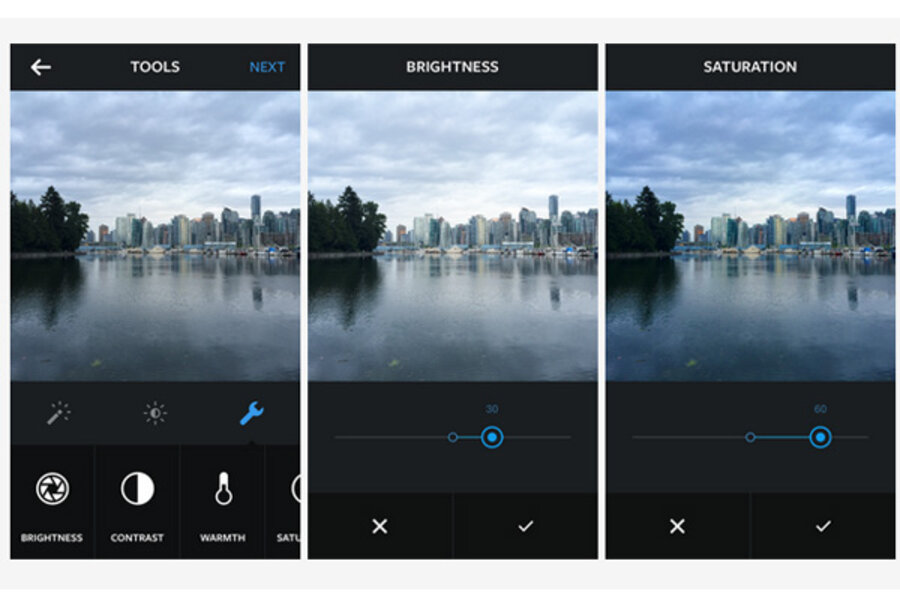Instagram expands beyond simple filters with new slate of photography tools
Loading...
Instagram is feeling pressure to play catch-up.
On Tuesday, the popular photo-sharing app, which is owned by Facebook and now has more than 200 million users, rolled out a series of updates that bring it increasingly in line with the features of a traditional digital camera. Users who update to Instagram version 6.0 will find 10 new tools allowing them to edit photos for things such as brightness, contrast, warmth, and saturation.
In keeping with Instagram’s traditional interface, the new editing tools are simple: black buttons with white icons. But the results are powerful, giving users the type of imaging capability once reserved for those with knowledge of Adobe’s industry-leading Photoshop software.
Until now, many Instagram users have snapped photos with their smart phones and then embellished these images with a series of digital filters. Shoot, apply, share. Easy and simple. Now, however, the experience comes slightly closer to, well, real photography – at least, the kind that requires a bit more time and attention to the editing process than Instagram users have grown accustomed to.
Granted, there are currently several apps such as Litely and Camera+ that do the exact kind of digital retooling that Instagram is now offering, as pointed out in a recent Wall Street Journal article. The desire to see such photo-editing capabilities gathered under the single Instagram heading likely played a key role in determining updates to the app.
For example, in an interview with Fast Company, Instagram product designer Chris Connolly admitted that he himself would often use outside apps before sharing photos on Instagram.
But he also explained that the new tools are the natural evolution of a photographer’s skill set. Just as one might graduate from a standard point-and-shoot camera to, say, a more complex digital single-lens reflex camera (DSLR), the photo-sharing app should also mirror this progression, he says.
“I think, the way I looked at it, filters are these great cocktail mixes for when you’re getting started, doing quick and easy edits,” Mr. Connolly tells Fast Company. “But past a certain point, there’s this desire to take more control and define your own style.”
Connolly’s view sheds light on what The New York Times’ Farhad Manjoo meant when he said Instagram stands in stark contrast to the majority of the photo-sharing world, which is “dominated by rough, quickly captured, little-considered snapshots.”
The photos cluttering your Facebook feed, the Snapchat photos disappearing into a sea of transience mere seconds after they grace your screen – often, little to no thought goes into these images, argues Mr. Manjoo. But Instagram, he notes, has carved out a niche for itself as the place for good-looking photos, a portfolio where people and places appear at their best, a heightened form of reality.
It’s a kind of cultural cachet that seems unlikely to wane any time soon, especially given that its percentage of active users grew by 23 percent in 2013, while the next highest growth among social networks, Reddit, grew only by 13 percent, according to a January report from GlobalWebIndex.







